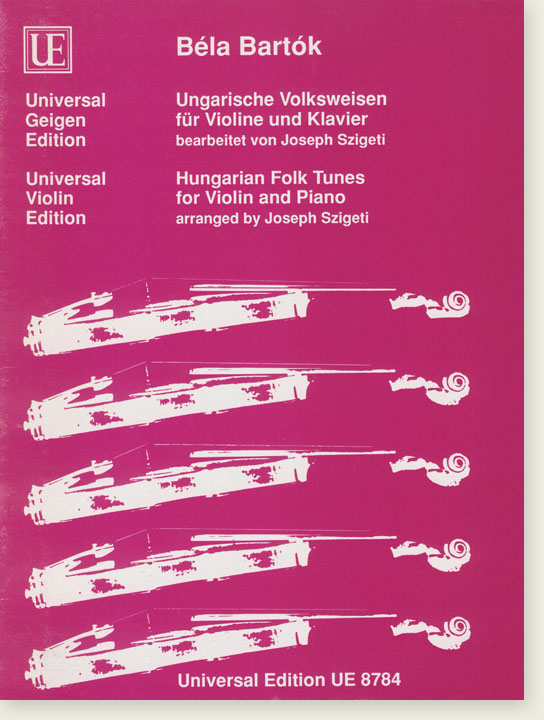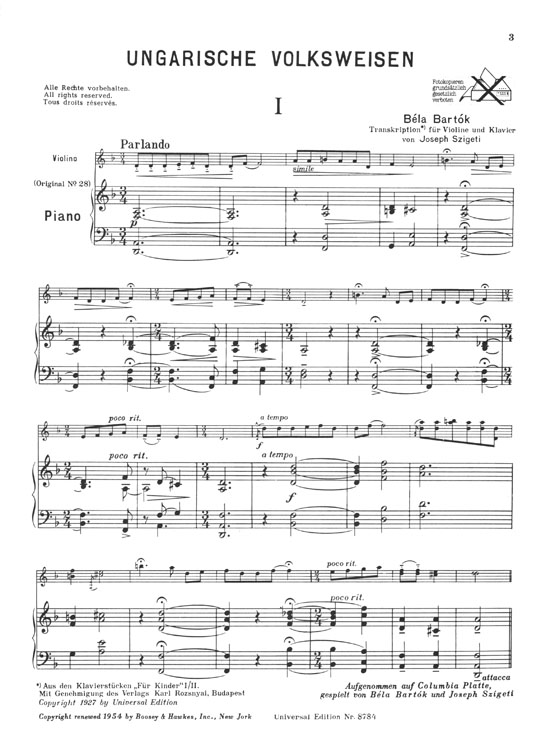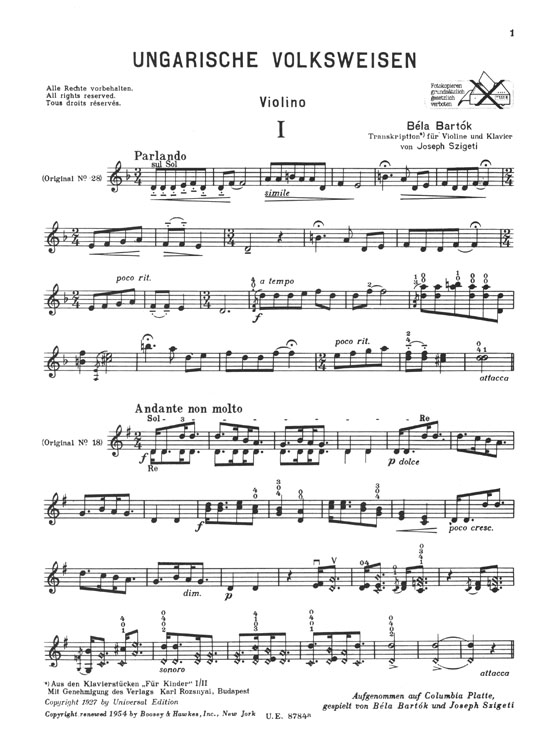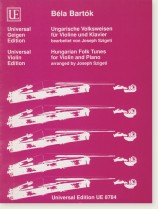Béla Bartók Hungarian Folk Tunes for Violin and Piano






巴爾托克在近代音樂史上佔有極重要的地位,音樂中大量的運用了匈牙利民間音樂的素材,民間舞蹈的節奏、教會調式、五聲音階以及多重調式手法,也結合了二十世紀各種風格及演奏的可能性,創造了獨特作品風格。Hungarian Folk Tunes改編小提琴演奏曲,小提琴分譜+鋼琴伴奏譜。
- 庫存狀況: 尚有庫存
- 出版社: Universal Edition
- 作者: Béla Bartók
- 編訂者: Szigeti Joseph
- 系列名稱: Universal Violin Edition
- 出版日期: 1970/1/1
- 總書頁: 18
- 商品編號: UE8784
簡介
訂購時請留意
本書流轉速度慢,出版時間較久遠,已有明顯折舊,書緣折損磨損泛黃現象
Bartók's "Hungarian Folk Tunes" were arranged for violin and piano by Joseph Szigeti in 1926, for which he used six pieces of the piano cycle "For Children".
At thirty-five, Joseph Szigeti was already an internationally famous violin virtuoso. Although he lived abroad, he decided to initiate a fruitful connection with Bartók in a roundabout way. In 1926 Szigeti prepared a transcription for violin and piano of six pieces from Bartók's "For Children", some Hungarian folksong arrangements which Bartók had set for the piano. Szigeti then sent the manuscript to Bartók's publisher, Universal Edition in Vienna, who passed it on to Bartók in Budapest in September of the same year. The composer was impressed by Szigeti's work and approved it after suggesting some changes. These included some minor corrections of the harmony and voice leading in Bartók's original composition as well as some changes in the piano texture, a revision of the key signatures and accidentals, and above all a reorganization of the pieces into three attacca blocks. The present II (b) movement was added by Szigeti following Bartók's advice. It is interesting to note that Bartók felt that his title "For Children" was not really suitable for this concert arrangement and that he suggested "Hungarian Folk Tunes" instead. After Szigeti and Bartók had checked the revised form in April in Budapest, the score was published in 1927. The gramophone recording made by Szigeti and Bartók in 1930 was originally released by Columbia in London and reissued on CD in: Bartók at the Piano, Hungaroton 1991, HCD 12326-31. It is important as a definitive example of what Bartók considered to be the proper rendition of the score. (L. Somfai)
目錄
Hungarian Folk Tunes
詳細規格
| 書籍資訊 | |
| 記譜法 | 五線譜(一般) |
| 原文語言 | 英文 |
| 特徵 | 西洋古典 |
| 適用對象 | 高級 |
| 樂器 | 小提琴 |
| 古典作曲家 | Bartok Bela 巴爾托克 |
| 時期與風格 | 20世紀 |
| 裝訂 | 平裝 |
| 形式 | 譜 |
| 外型尺寸 | 大於A4 樂譜常用尺寸 |

